Book Chapter
Publication Types:
Civic Engagement and Dialogic Approaches to Post-Truth in the Classroom
The question of how to teach media literacy in the post-truth era has been widely debated in the field of communication and media studies, with scholars such as danah boyd (2018) arguing that larger questions of epistemology must be included in such instruction. However, such arguments have not adequately addressed the potential for a civic engagement model as a pedagogical approach to this difficult and often politically divisive topic. Specifically, my chapter will address the important role of community dialog in helping students confront and develop a deeper understanding of the underlying epistemological issues related to the post-truth era and related debates surrounding fake news.
boyd (2018) argues that disagreement in the post-truth era is not over what is true, but rather the epistemological questions of how we determine if something is true. Similarly, recent sociotechnical approaches have argued that fact-checking and media literacy pedagogical solutions are not as straightforward as many believe. Marwick (2018) suggests that media literacy training has not actually improved students’ ability to accurately assess information and that fake news sites are becoming better at mimicking the very signals of legitimacy that are often taught as part of media literacy efforts. In light of these critiques, I will assess an evolving approach that I have adopted for addressing these issues in a Communication Law and Ethics course that I teach.
Based on the model for community dialog used by the Society of Philosophers in America, I developed an assignment in which groups of students were tasked with hosting an off-campus community-based discussion related to issues in communication ethics. Drawing on course materials and student work, this chapter analyzes the pedagogical benefit of having students themselves prepare to host a discussion about fake news and post-truth with a group of strangers who potentially hold a wide spectrum of political beliefs. Preparation for this event required that students understand and engage with a wide variety of beliefs. Pedagogically, this forced students to move beyond simply considering their own views, beliefs, and biases and instead consider how post-truth impacts their broader community. An added benefit of this approach is that it emphasizes the importance of civility in this dialog, helping students to not only evaluate their own beliefs, but strive to develop strategies for communicating in productive ways with those with whom they disagree. It actively requires negotiating the potentially blurry boundary of how we determine truth.
I argue that adopting a civic engagement pedagogical approach can not only reduce some of the challenges associated with teaching issues related to post-truth, but forces students to engage with the material in a more thoughtful, meaningful, and contextually relevant way. In conclusion, this chapter, by closely examining the process and results of a civic engagement approach to teaching post-truth in the classroom, sheds new light on the importance of dialog in the context of post-truth.
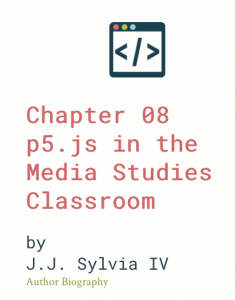
p5.js in the Media Studies Classroom
I explore the implementation of major assignments that require students to both learn and use p5.js as a tool for a media studies-related group project. The data that I draw upon include direct observation of students and collection of artifacts and texts such as assignment instructions, rubrics, and examples of student work. The case study involves the implementation of p5.js in three different settings: an upper-level media studies course at a large research-intensive public university, an introductory-level media studies course at a small regional public university, and at a Digital Humanities Workshop open to public registration at a research university.
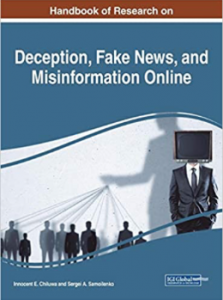
False Narratives: An Analysis of Internet Research Agency’s Facebook Advertising Campaign
The issue of Russian interference in the 2016 U.S. Presidential election has been widely debated by scholars and journalists. However, these works have not fully analyzed the ads that have been released by Facebook and the U.S. Congress. This project uses a case study to analyze the ads posted by the Russian-affiliated Internet Research Agency, considering the quantities of ads targeted to particular geographic locations, the frequency of targeting for unique keywords, and the reach and impressions of each of the ads. Further, these results are compared to results from best practices in traditional social media campaigns as a way to better understand the goals and potential impacts of the IRA ads. In con- clusion, the project, by analyzing the full set of IRA ads, sheds new light on the way false information narratives were leveraged by the Russian-linked IRA.
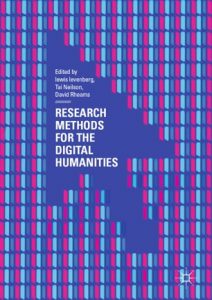
Code/Art Approaches to Data Visualization
This chapter introduces a code/art approach to data visualization. Though coding has received increasingly greater amounts of attention within the field of Digital Humanities, it has primarily focused on more traditional types of visualizations such as charts and graphs. However, the iteration that is possible through generative design affords more artistic approaches. Casey Reas and Chandler McWilliams1 claim that particular programming languages afford specific opportunities. In much the same way that a carpenter would select particular tools and a particu- lar wood depending on the project, programming languages require sim- ilar careful selection. I use p5.js as the language of choice for this chapter because it is a free, open source language specifically designed for begin- ners, artists, and educators. It is a very accessible language that allows one to quickly begin creating dynamic content on the screen, even with very little previous programming experience.
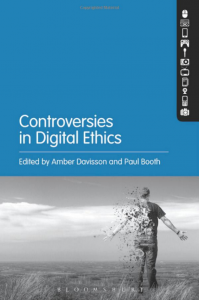
Little Brother: How Big Data Necessitates an Ethical Shift from Privacy to Power
Abstract
The ability of both people and organizations to leverage big data in new ways has rendered the traditional ethical frameworks for dealing with issues of privacy and commodification ineffective and archaic. The leveraging of such data raises new questions related to the power generated for businesses through the big data divide—the gap separating those who have access to big data and those who do not. Although the ethical issues related to big data have historical roots in commodification, we have the opportunity to embrace a new ethical framework for this age. Rather than focusing on privacy issues, big data can be better understood through the issue of power discrepancies created by the big data gap. One ethical aspect of this shift is seeking more emancipatory and affirmative uses of big data.
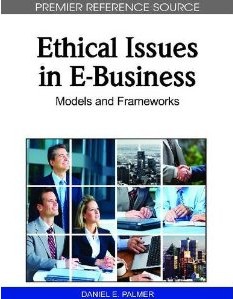
The Ethical Implications of A/B and Multivariate E-Commerce Optimization Testing
Abstract
A/B and multivariate website optimization may not seem ethically problematic at first blush; however, in this chapter I will consider some of the less obvious elements that have been tested, such as header color, button design, and the style of tabs used for linking to product details. A/B and multivariate testing has shown that these seemingly insignificant changes can increase average order value and decrease abandoned shopping carts, among other results. I will consider these tests through the lens of the major ethical systems of utilitarianism, Kant’s respect for person’s principle, and virtue ethics, using specific case studies and examples of testing results. I conclude that this type of practice is likely ethically problematic in many uses, as understood through all three ethical systems. Along the way I will be careful to demonstrate how the manipulation resulting from A/B and multivariate testing is different and more problematic than that of advertising in general.
